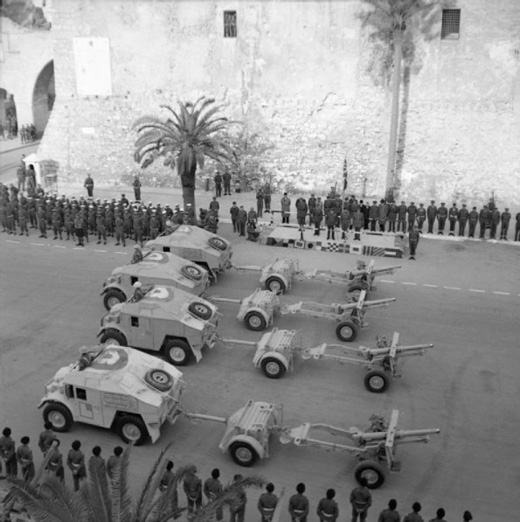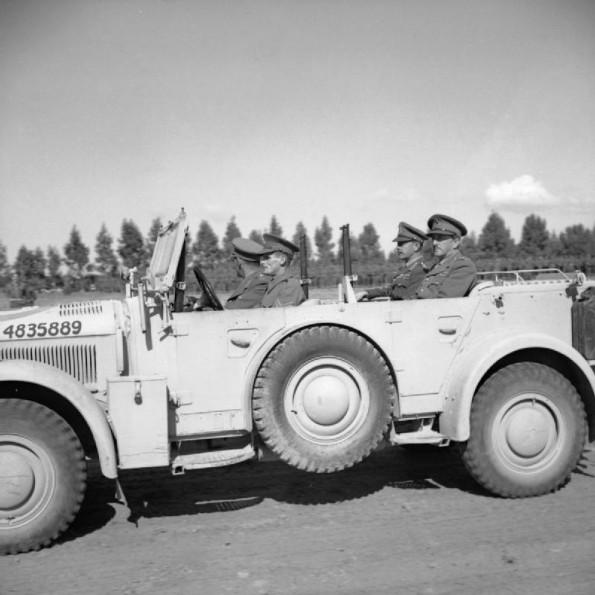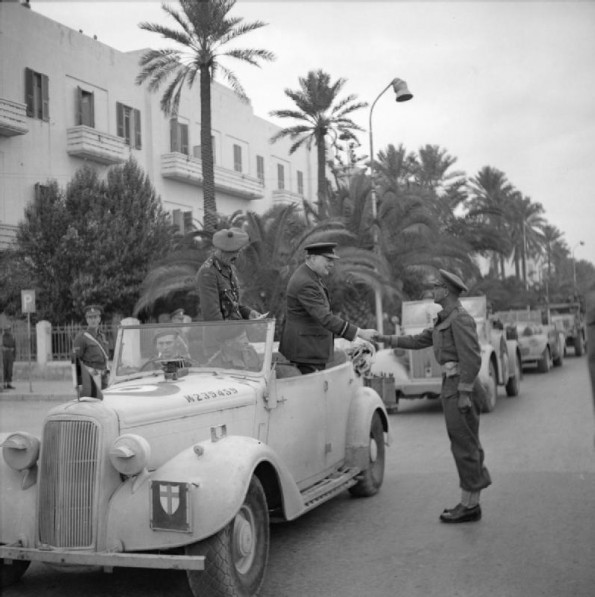Air Operations, Aleutians
- 3 28th Composite Bomb Group B-17s, 3 B-24s, 3 B-25s, 4 343rd Fighter Group P-38s, and 8t P-40s attack the Kiska submarine base, a cargo ship, and the main encampment, and the P-40s strafe ground targets. Definite signs of a new Japanese Navy fighter strip are discovered.
- 5 Japanese Navy bombers attack Amchitka.
Air Operations, Bismarcks
43rd Heavy Bomb Group B-17s and 90th Heavy Bomb Group B-24s attack the airfields at Cape Gloucester, Gasmata, and Rabaul, and a ship at sea off Arawe, New Britain.
[Air Operations, CBI
BURMA- 7 7th Heavy Bomb Group B-24s and 6 341st Medium Bomb Group B-25s attack the bridge at Myitnge. 3 B-25s attack rail shops at Myitnge.
Air Operations, Europe
BOMBER COMMANDEvening Ops:
- 188 aircraft are ordered to Turin including 77 Lancasters, 55 Halifaxes, 50 Stirlings and 6 Wellingtons.
- 156 of these planes reach the target. Huge fires are started in and around the city and the nearby naval base of La Spezia. Elsewhere in Italy, 4 Pathfinder Lancasters are sent to an Italian port to try out a new type of 'proximity fuzed' 4,000lb bomb which explodes between 200 and 600ft above the ground to widen the effects of the resulting blast. 3 aircraft drop their bombs successfully, but this type of weapon does not seem to have come into general use.
- 3 Lancasters on the Turin raid are lost.
- In another major effort, 128 aircraft including 103 Wellingtons, 16 Halifaxes and 9 Lancasters attack Lorient.
- This raid is an all incendiary attack without Pathfinders. The bombing is concentrated and large areas of fire are started.
- 1 Wellington is lost.
- 2 Mosquitos bomb Bochum and Ruhrort and 1 Wellington lays mines off Lorient.
- British and US bombers launch Operation GONDOLA with a series of raids aimed at destroying U-boats in the Bay of Biscay. Bombers use immensely powerful searchlights to illuminate submarines during attacks.
Air Operations, Far East
RAF Liberators bomb the Rangoon docks.
[Air Operations, New Guinea
- V Bomber Command B-25s and A-20s attack Japanese Army ground troops at Komiatum, Mubo, Wau, and Zaka, as well as the harbor and antiaircraft emplacements at Lae, and the Lae airfield.
- V Bomber Command heavy bombers attack small boats at Lorengau on Manus Island in the Admiralty Islands.
Air Operations, Pacific
US aircraft attack a large force of Japanese destroyers around Guadalcanal. 1 Japanese destroyer is sunk and 4 others badly damaged. In aerial combat during the incident, the US loses 4 torpedo planes, 4 fighters and 2 bombers, while 22 Japanese aircraft are shot down.
[Air Operations, Solomons
- 4 VF-6 F4Fs down 1 G4M 'Betty' bomber at sea at 1211 hours.
- US Navy land-based bombers, along with 1 XIII Bomber Command B-17, attack the Kahili airfield on Bougainville and other US Navy land-based bombers attack the Munda Point airfield on New Georgia.
- 1 Japanese light cruiser and 22 destroyer-transports on their way to evacuate Japanese Army ground troops from Guadalcanal are attacked by 12 Cactus Air Force SBDs and 13 TBFs, escorted by 28 fighters. 1 destroyer is seriously damaged and 3 are lightly damaged by bombs.
- 1 TBF, 1 SBD, and 1 F4F are lost.
- In a second attack, 12 SBDs, escorted by 10 F4Fs and 4 P-40s, damage 2 destroyers.
- 1 SBD, 1 P-40, and 2 F4Fs are lost.
- VGS-11 F4Fs down 7 A6M Zeros and a VGS-11 TBF downs 1 A6M Zero off New Georgia at 1530 hours.
- 347th Fighter Group P-39s down 2 A6M Zeros near Kolombangara at 1610 hours.
- VF-72 F4Fs down 7 A6M Zeros off New Georgia at 1630 hours and 347th Fighter Group P-40s pilots down 3 A6M Zeros near New Georgia at 1730 hours.
- Throughout the day, 10 Cactus Air Force aircraft are lost, mostly to antiaircraft fire from the Japanese destroyer-transports.
- During the night 5 Cactus Air Force SBDs attack the Japanese destroyer-transports in flare light provided by a VP-12 PBY.
Air Operations, Tunisia
- In the morning, 18 XII Bomber Command B-17s attack Gabes Airdrome and a landing ground west of town.
- In the afternoon, 24 B-17s attack Gabes Airdrome again. Escorting P-38 pilots down 1 Bf-109 and 1 FW-190.
Allied Command
Eisenhower is given command of all Allied forces in North Africa.
[Allied Planning
A conference of army chiefs in New Delhi, attended by Field-Marshal Sir Archibald Wavell, Field-Marshal Sir John Dill and Gen Joseph Stilwell, with the Generals Henry H. Arnold and Brehon B. Somervell, comes to an end. Decisions are taken to reoccupy Burma and then to attack the Japanese forces in China. The plan is to be submitted to Chiang Kai-shek.
[ Churchill's Visit to Tripoli |
 |
Battle of the Atlantic
- Over the next 6 days the convoy SC-118 is attacked by 20 U-boats during this time and loses 20 of its 63 ships. There are 10 escorts at first, 12 later, and they sink 3 submarines and badly damage 2 more.
- In Operation GONDOLA the first in a lengthy series of RAF and USAAF operations against U-boats in the Bay of Biscay begins. In this operation which continues until June 12 U-boats will be sunk. 'Leigh Lights', immensely powerful searchlights, are used with great success.
- U-187 makes a sighting report of convoy SC-118 at noon. The transmission is brief, but it is picked up by a couple of the convoy's escorts. The destroyers Vimy and Beverley are sent to the area. Vimy makes four attacks with depth charges after which the submarine surfaces. Both destroyers open fire and U-187 sinks by the stern.
| Class | Type IXC/40 |
| CO | Kapitänleutnant Ralph Münnich |
| Location | N Atlantic |
| Cause | Depth charge/gunfire |
| Casualties | 9 |
| Survivors | 45 |
Eastern Front
The Russian advance continues on all fronts. Shcigny, 40 miles east of Kursk, is taken as is Kanevskaya, only 30 miles from the Sea of Azov to the east of Tikhorestsk. Assault troops are landed in a combined operation on the Black Sea coast in the Novorossiysk area, where they are engaged in hard fighting with units from von Kleist's Army Group A. These units are now completely isolated within a fortified line, the 'blue line', in the area between Novorossiysk and Krasnodar, between the Black Sea and the Sea of Azov. The German 17th Army is now cut off in the Kuban and must be supplied by sea from the Crimea.
SOUTHERN SECTORThe Soviet 3rd Tank Army reaches the Donets but is then halted by the newly arrived SS Leibstandarte Div. At Slavyansk, XL Panzer Corps fights to hold its poisition. In the Caucasus, the 17th Army contains Soviet amphibious landings at Novorossisk and Ozerreyka Bay. Since January 1, the Southern Front has lost 54,000 killed and missing and 47,000 wounded, the Trans-Caucasian front 12,000 killed and missing and 30,000 wounded, and the North Caucasus Front 3,000 killed and missing and 7,000 wounded.[MORE]
[Germany, Home Front
3 days of 'national mourning' begin to commemorate the 'Stalingrad Disaster'. All theaters, cinemas, night clubs and other nonessential businesses are closed.
[Guadalcanal
The 147th Infantry advances about 1,000 yards westward to a line about 1,000 yards southeast of the Umasani against light opposition. The concentration of the 2nd Battalion, 132nd Infantry, with its artillery, transport and supplies at Titi is completed. The Japanese withdraw additional forces by sea from Cape Esperance under cover of darkness. A squadron of 1 cruiser and 22 destroyers, the usual 'Tokyo Night Express', led by Adm Tomiji Koyanagi manages to evacuate 5,000 more Japanese troops from the island. 4 ships are damaged by air attacks.
Another Japanese evacuation force, 1 cruiser and 20 destroyers, come in with sufficient air cover. 65 American planes attack but the Japanese planes defend the force well. All the destroyers get through, but there is some damage to the Shiranuhi and the Maikaze. The PT boats do not come out as they had been badly mauled 2 nights previous. Night fighting is still not an American strong point and harrassment by Japanese planes over Henderson Field keeps the Cactus Air Force down.
[New Guinea
The Japanese, harassed by aircraft, begin retreating in disorder from the Wau area. A prolonged period of intensive patrolling ensues as Kanga Force attempts to intercept and destroy enemy groups, the remnants of which eventually reach Mubo.
41st Division Troops |
 |
North Africa
In Convoy 'Pamphlet' 30,000 battle-weary Australian troops leave Suez for home aboard the Queen Mary and 4 other liners.
The Headquarters for the North African Theater of Operations (NATOUSA) is established as a separate command under Gen Eisenhower at Algiers. The ETO boundary is changed to give Spain, Italy and several of the Mediterranean islands to this command. Lt-Gen Frank M. Andrews becomes head of ETOUSA.
TUNISIAThe British 8th Army has completed the conquest of Tripolitania and crosses into Tunisia, where Rommel is hastily preparing for a stand at the Mareth Line. Enemy rear guards are imposing maximum delay as the British approach Mareth.
|
| ||||
| [February 3rd - February 5th] |

